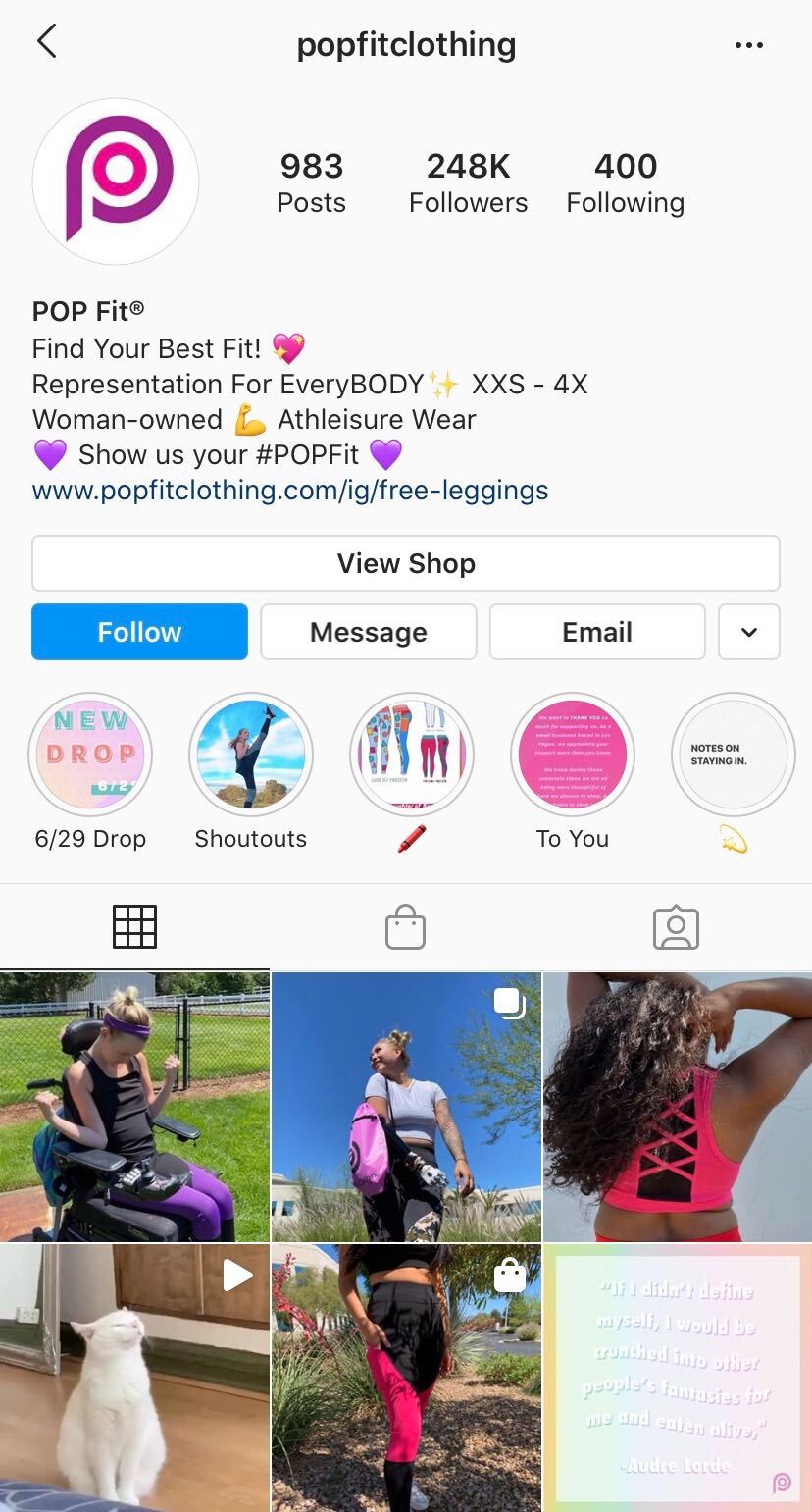March 9, 2021 - Brittany Garlin
What Not To Do On Social Media In 2021
Social media in 2021 is going to be a massive year for all. While 2020 was a year of unprecedented change, social media marketers need to pick up their marketing game to get the lion’s share of the market today. Social media is a boon and a curse for many businesses. With constant awareness and ease of outreach, businesses find that with all the pros come many cons. Most online customers are incredibly critical taskmasters that do not hesitate to voice their opinions on a general public forum. While the praise is instrumental in building a brand, the negative comments can also destroy public faith in the company’s goodwill.
Social media marketers in 2021 need to account for a change in the dynamics of customer behavior. Businesses are opting for online sales rather than only from brick and mortar establishments. While this is beneficial, there is already an overload of online content that can cause stiff competition between small businesses and large corporations with decades of experience in capturing the market share. Such times are when clear social media strategies come into play to make the company stand out.
There is a thin line between what to do and what not to do with any marketing strategy. Most people always follow all the bits essential to their business but fail to understand everything they shouldn’t do. Many times (especially in the industry), it is vital to show restraint and draw limits on a public forum like social media in 2021.
Since you will undoubtedly have a lot of information on what to do with this article, we hope to share all the things you should not do on social media in 2021. This list is not an exhaustive one, but we will try to cover the salient features.
What Not To Do On Social Media In 2021
Battling for Attention:
Social media strategists always strive to outdo their competitors and gain a larger market share than others. This is usually a sound strategy except when overdone. Most social media marketers tend to overdo the battle for attention by flooding the market with advertisements, product placements, service benefits, and the like. Podcasts, streaming on music portals, ticker advertisements on related and unrelated sites, pop-ups, and several other marketing tricks can irritate the end-user or customer.

Social media in 2021 does have its benefits in terms of outreach and capturing a larger audience. Still, it should not be at the cost of irritating the customers and making them dread the brand name. A Blitz Krieg strategy does not always work for products and services. This social media bombardment on all portals does more harm than good to the brand name and image. For most businesses, brand goodwill is essential. By forcing people to continually see the brand every time they are online, the goodwill soon turns to losing market share. Consumers fed up with the advertisements, constant reminders, mobile pop-ups, videos, ad films, and blog mentions will not look favorably upon the brand.
As with any strategy, understanding limitations and showing purposeful restraint is necessary. In 2020, all users and consumers faced the same issues during the global pandemic. The lockdown brought upon severe mental health issues, stress, personal relationships strain, and a host of other problems related to sitting cooped up in one place all the time. Now that 2021 is slowly opening doors again, consumers should not get brand fatigue and avoid your brand altogether. Instead, media marketing should be done skillfully to weave a measure of trust and hope with these consumers. Since 2021 is the recovery year, gaining old customers and acquiring new ones should be done seamlessly without battling for constant attention from others.
Avoid Disrespecting Cultural Sensitivity:
2020 was marked by a severe mid-pandemic crisis in the form of racial consciousness. Cultural sensitivity and respect should be maintained at all times. Businesses play a significant role in preserving equality in race, gender, and ethnicity. Different customs and traditions, festivals, religions, languages, and histories make it slightly challenging to avoid overstepping cultural sensitivity boundaries. Still, fundamental human rights and respect should be maintained at all times. Many people feel making fun of a situation and trying to lighten up the mood is fruitful to peace. However, most of the time, these people usually commit faux pas and insult and hurt sentiments.
It is necessary for today’s diverse, multicultural environment to remain ethical and professional, especially social media in 2021. Meeting someone face-to-face and making a mistake might be forgiven, but making a colossal error online will undoubtedly cause a lot of backlash. Some companies may also face legal action. Your brand should nurture feelings of safety and acceptance. By being ignorant of cultural and racial sensitivity, you could cause a disparity in the way people perceive your brand and cause a loss of trust in the brand. Since social media is a public forum, it is best to use inclusive language in all posts, tweets, or stories. While responding to private messages or direct messages, it is best to use mutually accepted pronouns unless specified by the audience member.
Even in the face of online criticisms, tirades, critiques, abusive, or any other non-socially accepted language; it is best to remain unfailingly polite and respectful. Potential customers, existing customers, and past customers note this behavior. They prefer working and dealing with businesses that show respect even in dire circumstances. When making posts, engaging pictures, infographics, videos, or other social media content, it is best to use simple, non-complex, non-diverse language. You should always remember, the whole purpose of building a brand via social media and investing in marketing is to build rapport, gain market goodwill, and improve the global brand standing.
Avoid Spam Content:
Consumers are bombarded with brands trying to vie for their attention all the time. Spam competitions, likes, and shares will not win you any favors with your customers. Hosting the occasional online competition to capture audience attention is fine, but making this a regular affair will create doubt in potential and existing customers’ minds. In case your company is sponsoring an event or a social cause, then sending out reminder emailers, social media posts, and other related online event updates is expected. However, overdoing it each time will not help the brand image. Most customers expect updates on Twitter, Facebook, Instagram, and LinkedIn, since they use these popular social media giants to stay updated.
When you are considering the overall scope social media in 2021 for events and content that is sent personally to existing customers, it is best to make it concise and to the point. Unnecessarily spamming the inbox, sending irrelevant text messages three times a day, and making cold calls will not help your social cause. Instead, showing the importance of the cause with a few shareable, emotional and touching videos will do the trick better than sending out spam. Bombarding the audience with spam is hugely intrusive and unsubtle. Some people also consider it harassment.

Competition spamming also causes unnecessary guilt in the minds of people. They feel guilty for sharing a retweet again and again on their friends’ walls just because they want to win a prize you have announced. Hosting a short competition is still bearable, but ones that force people to retweet and cause issues over a few days can be extremely detrimental in the long term. You would want to avoid the sentiment of guilt associated with your brand. Negative emotions related to your brand will decrease the ranking on social media.
Depending upon the brand positioning, you should consider hosting short competitions that get many likes and mentions. Prolonging these things over several days or weeks is not conducive to the image.
Don’t Promote Irrelevant Content:
Creating and sharing quality content should be the motto of your social media strategy. Many businesses forget that every message, tweet, and share is reflected directly upon the brand and company image to gain more followers and likes. Brand health is a genuine concern that can only be addressed and protected with positive content. Business brand equity can only be considered in terms of the volume of sales of goods and services. This worth is directly connected to the brand image and future value for consumers in the long term. For example: not a gross closeup shot of beans.
Brand health is also directly correlated to the visibility, response, and interaction with existing and potential customers. Most business practitioners also equate brand image with the positive reaction it generates in the minds of customers. It is not only customers who are considered in the race for brand health and recognition. External and internal stakeholders, employees, vendors, and sub-vendors also play a significant role in brand image. For your social media strategy to work, you should ensure that all customers respond positively to the brand name. This positive response is only possible with relevant content sharing.
Most businesses focus on sharing all content on their pages to attract all demographics of consumers. However, sharing everything visible online is not a good strategy. It is necessary to promote and create content that has value and usability to the end customer. Companies that indiscriminately share all content on social media lose the narrative of their own brand image. Content should be used to educate, inform, and entertain users about its products and services. It should also be used to create attention or cause changes in behavior over social concerns and topics like abuse, racial discrimination, violence against women, infanticide, and other extremely critical issues related to humanity.
While oversharing is a significant concern, sharing irrelevant content is another. You should always associate your brand image with social topics that are memorable and spread a positive note. Avoid posting content associated with hate speech, racial slurs, and other socially unaccepted norms.
Don’t Change The Tone:
Customers recollect brand names and images associated with a singular voice. The tone of content and method of communication helps build trust in consumers. Social media is mostly built on a few blocks – groups, reputation, conversations, identity, sharing, relationships, and consistent online presence. Since online social media is mainly written, it is difficult to detect the perfect tone of voice. The writing method, consistency, and words used help build tone of voice. It also usually affects all the blocks mentioned above. Brand communication and presence building require careful consideration and moderation of these blocks.
The tone of voice usually sets the brand values and personality of the brand. For instance, a brand like McDonald’s uses a lively style for younger generations. In contrast, Apple uses a tone of voice more suited to adults. When it comes to online communication, how words are conveyed is as important as what is being said. Visual content requires the same tone that written communication needs. This tone usually becomes associated with the brand identity. Serious tones correspond to a more formal business, while lively and friendly styles are enjoyed by informal audiences.

The tone of voice on social media is also related to the humanness of your brand. Social awareness drives, events, major product launches, and more can be conveyed using the perfect tone. Some companies prefer using only formal language in all their communication – this is widely known as a corporate voice. Humanized tones of voice are considered informal communication but are as effective as formal communication. If you have started communicating with your audiences in a specific tone of voice, changing it halfway and confusing them would be detrimental to the brand.
Businesses are identified using their communication methods, tones of voice, taglines, honesty, and approachability. Continue interacting with customers using the same tone of voice. If you have a corporate voice but want to shift to more humanized tones, start making the shift gradually. Using a smiley at the end of a post, creating an emotional or social video wishing customers the best of health, and other such minor changes should be implemented as part of the social media strategy.
Stop Posting Inconsistently:
With any social media strategy, consistency is always key. Many social media marketers prefer sharing and updating the home page based on news points instead of a schedule. While there are instances when the need of the hour is to post quality, relevant content, it is best to stick to a plan. Several online posting services allow businesses to post at a pre-scheduled time and on a specific date. The planning team can schedule posts, articles, blogs, images, relevant messages, tweets, and much more based on this schedule.
Planning the posting schedule and sticking to it also helps in keeping the audience engaged throughout the week. Many companies prefer posting content at a time when traffic is the highest. Lunchtimes, tea times, and other scheduled break times are when people check their smartphones the most. Social media platforms like Facebook, Twitter, and Instagram have the highest footfall during these times. This means that instead of posting something bright and early on Monday morning at 9am, it might be prudent to schedule a post at noon. Hence, the audience engagement is higher than average.
Posting consistently throughout 2021 will also help get new customers, reel in old ones, and ensure that audiences start having brand recollection. Scheduling content also helps keep track of engagement times and enables you to track audiences better and more efficiently.
Final Thoughts
While there is no set method to ensure you do not make any mistakes in 2021, sticking to these few basics will help avoid unnecessary hassles. Apart from this, you should also ensure that your customer service team stays in the loop with the media marketing team since customer queries and complaints come via Direct Messages or Personal Tweets.
Another interesting strategy to do this year is to reach out to people with entertaining content that helps bring out your brand’s quirky side. People find it easy to connect with brands that come across as human and approachable. Adding a sense of humor to the posts, quirky staff updates, and giving people the company’s backstory can make the brand memorable. Sharing a few videos of the struggles that people faced during the pandemic and how the world is emerging stronger will also increase brand value.
Grow with the #1 marketing agency network and top destination for businesses to hire
Sign up for Agency Vista, and see why over 50,593 marketing agencies trust us to grow their online presence and foster credible relationships with businesses. We’re free forever, and you can upgrade, downgrade, or cancel any time.
Get Started
Get started free
Setup in minutes
No credit card required

Agency Vista is the new way for brands to find and easily connect with marketing agencies. Explore 50,593 verified profiles and reviews to find the right agency for your business.
Copyright © 2025 Agency Vista LLC. All rights reserved. Lovingly made in NYC.


